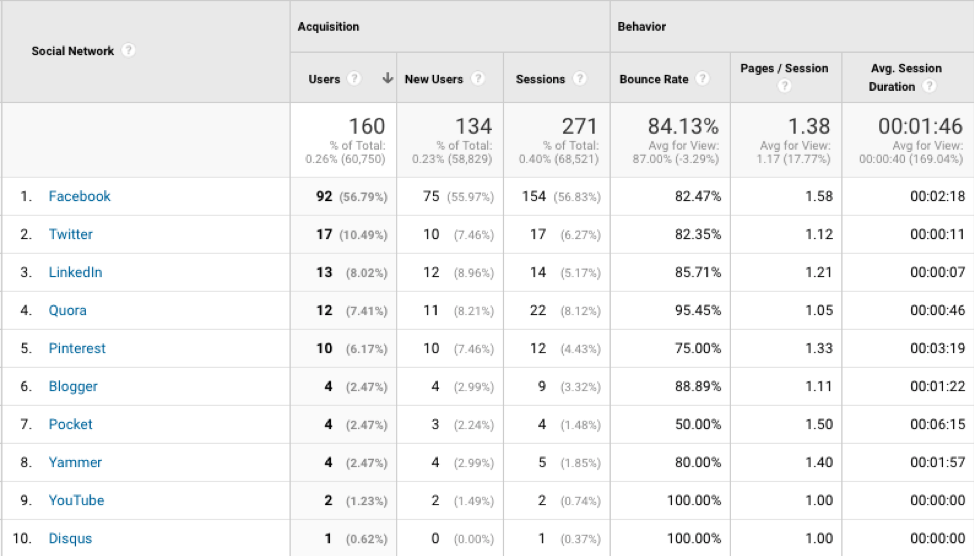
Monitor your customers, competitors, influencers, industry trends, and other relevant information. Social media analytics will help you and your marketing team determine which content and campaigns are performing well. It can also help you learn what content isn't resonating with your target audience. 2015 saw only 17% companies integrate customer data across their entire organization. However, it can be difficult for companies to fully leverage this information. Here are some tips to fully leverage social media monitoring.
Keep an eye on competitors
Social media monitoring will allow you to outperform your competition and develop marketing strategies that your target market can't resist. Your competitors' social media activities will show you how they communicate and use social media. You will also be able to identify what they are doing that will make your marketing stand out. Here are some tips on how to monitor your competitors social media.
Subscribe to Sharelov - This free social media monitoring tool will allow you to monitor up to 20 Facebook accounts and 10 Twitter accounts. You will be able to see what your competitors are posting and how their audience reacts. This tool will help you discover new hashtag opportunities that are best for your marketing efforts. Once you have signed up, you can access the Sharelov tool to keep track of your competitors on Facebook and Instagram.
Monitor customers
Brands must keep up with their customers' social media activity to stay ahead. Recent studies show that 75% of US shoppers have changed their shopping habits over the past year. This is largely due economic factors and personal priorities. However, consumers can adapt quickly to change and brands that fail meet their needs are likely to lose customers to rivals. 75% of brands don't engage in social media monitoring. Businesses can prevent being disrupted by proactive customer responses and enhance customer loyalty.

Brands can identify any trends that could be negatively impacting their performance by having a social media monitoring strategy. Marketers can monitor social network sentiments to identify which campaigns are generating the highest engagement and track the effectiveness. Additionally, these tools will allow marketers to know which types of content are being shared most often by customers. A company can track which pages and posts get more engagement if they have a website.
Follow influencers
Monitoring the mentions and conversations about your target brand/product is one way to track influencer marketing efforts. You can accomplish this by setting up "Mention alarms", which are keywords that trigger a notification whenever someone talks about your brand. These notifications can be personalized to allow you to receive email or push notifications. Mention's starter plan is suitable for small businesses. This plan includes basic alerts, 5,000 mentions, 3 users and sentiment analysis.
While it is not an effective marketing strategy, monitoring social media influencers can help you gauge your brand's reputation among potential customers. It's vital to identify those people who are most likely to buy from your brand. Often, these people have the biggest following on various social networks, so it's important to engage them in conversations about your brand. You should also monitor them for weeks or months to see how well they interact with their audience.
Keep an eye on industry trends
Social media monitoring can allow you to identify emerging consumer sentiments and provide insight into industry trends. Social media gives you a wealth data about your consumers, which can be used to help develop marketing strategies. Conversation analysis can be used for uncovering new sources and topics. You can begin by categorizing social media conversations based on their content by opinion leader, journalist or practitioner, as well as by union. Next, you can use keywords to segment data into clusters. For more detailed analysis, you can use filters to isolate the best data sources and then apply them to your marketing strategies.

Once you know what topics are being discussed about your industry, you can start to build your social media strategy. Social media tools such as Buffer can be used to monitor industry hashtags and major industry influencers. You can also use Buffer to track news sources and Twitter chats. Feedly allows you to subscribe to industry news and insights. You can also monitor hashtags from conferences and follow major industry influencers to stay up-to-date on industry trends.
FAQ
Is content marketing worthwhile?
Content marketing is an integral part of any online business strategy. It's also an incredibly effective way to gain exposure for your brand. Content marketing isn't just for customers. It makes your brand stand out from others.
Content marketing is all about creating valuable information that people want to consume. Content marketing is a key component of any digital marketing strategy. It helps companies engage their target markets.
What is one of the main goals of content marketing?
Content marketing is all about providing customers with valuable and relevant information. This can happen through different channels, including email campaigns, blog articles, whitepapers, and others. Your audience should be able to see the value you are providing.
How can I measure success when using content marketing?
There are many different ways to evaluate the effectiveness your content marketing strategy.
Google Analytics is a good tool to measure your progress. This tool can show you where your targeted traffic originates and what pages they visit the most often.
It also displays how long each visitor remains on your website before leaving.
You can then use this information to improve your content to get people's attention and keep them engaged for more extended periods.
The following questions will help you to measure the success and failure of your content marketing efforts:
My email newsletters are providing value for my subscribers. What proportion of my mailing list has become paying members? How many people have clicked through on my landing site? Are click-throughs more successful than other types of conversions?
These are all important metrics to track, monitor, and report on over time.
A third great way to measure the success of content marketing is to count how many people share your content through social media.
It's worth starting now, if it isn't already. It could make all the difference in whether you are seen or ignored in your industry.
Statistics
- Forty-seven percent of buyers view 3 to 5 pieces of content before engaging with a sales representative. (mailchimp.com)
- According to the Content Marketing Institute, 70% of B2B marketers and 86% of B2C marketers surveyed use content marketing in some form or other. (criteo.com)
- This marketing strategy landed Ford a 15.4% conversion rate. (neilpatel.com)
- Progress indicators (0–100%) allow each team member to see how attainable each goal is and understand what remains to be accomplished. (semrush.com)
- According to research compiled by Coschedule: Companies that publish 16+ blog posts a month get as much as 3.5x as much traffic as those that publish 0-4 posts a month. (criteo.com)
- Seventy-two percent business to business (B2B) (mailchimp.com)
- Out of the 1,500 marketers we surveyed for our State of Content Marketing report, 78% who felt their content marketing strategy was exceptionally effective in 2021 had documented their strategy. (semrush.com)
- In fact, would pay more for a better customer experience, and 86% of B2B buyers would pay more. (neilpatel.com)
External Links
How To
How can you create a content marketing strategy for your business?
The first step is understanding what kind of content you want to create for your clients. Once this is done, it's now time to create content. This could mean creating an editorial calendar and planning the source of these content. Content should always serve a purpose. No matter whether content is blog posts, social-media updates, or other, it should all serve a single purpose.
Once you have determined the content you want and who you are targeting, you need to know who they are. Which market are they most interested in and why?
After identifying your target market, next comes finding ways to communicate with them. Although social media platforms can be a great way of connecting with people, there are many other options, including videos, podcasts, webinars and webinars.
The next step after deciding how to communicate with your market is to decide what topics or types of content you want. This is how you will determine the reason for writing the content. What problem does it solve How helpful is it? Does it make their lives more easy?
You now know what content you like to write. Now it's time for you to decide what you want. Do you want to share information about your industry? On current events? What about specific products or services? This question will determine your focus.
Once you have answered all of these questions, it is time to put everything together into one package.
It is important to make sure that each piece of content you create serves its intended purpose. You don't want anyone to waste their time or energy so make sure you build quality into all aspects of your content.
Remember that great content marketing strategies have many moving parts.